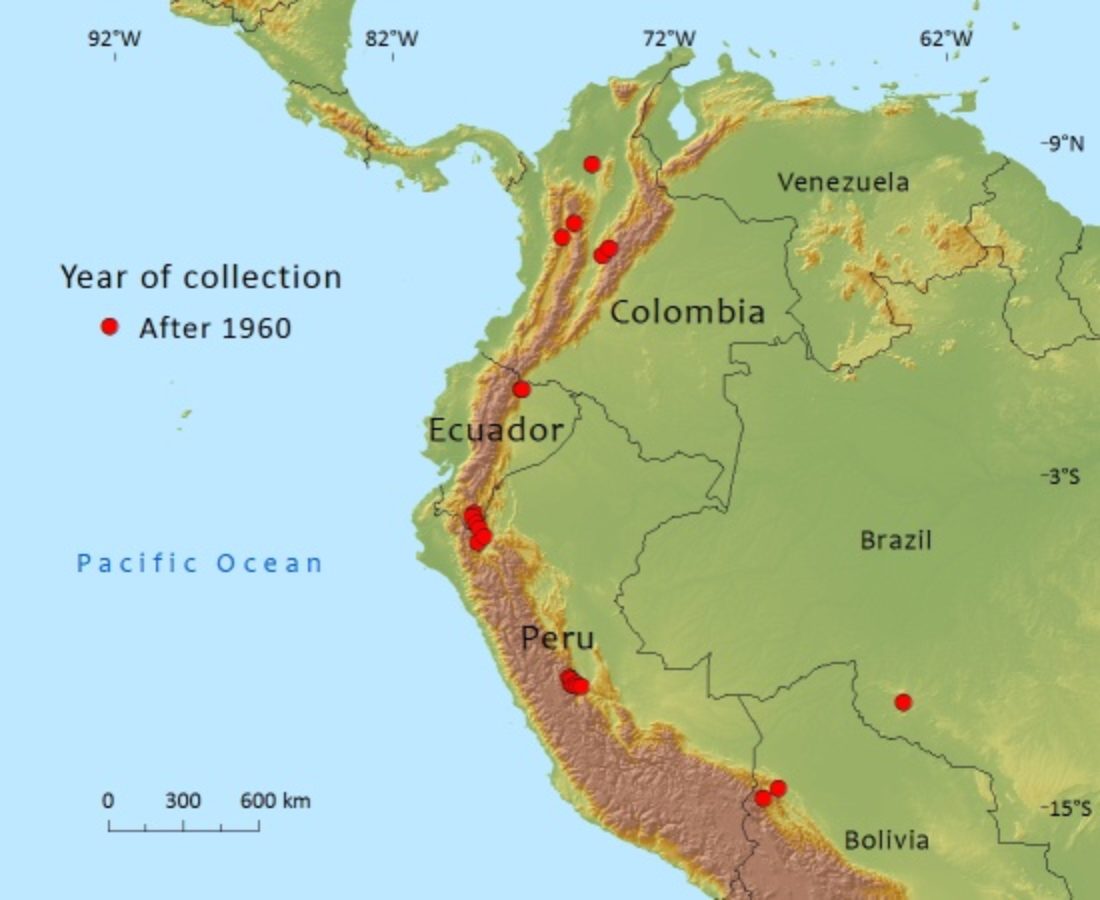Distribution
R. rospigliosii occurs in Tropical South America in the following countries:
Bolivia: Dept. Lap Paz (Provs.: J. Bautista Saavedra, Franz Tamayo). Colombia: Depts.; Magdalena, Cundinamarca (Albán, Pacho, San Franscico, Subachoque, Tena, Ubaté) Huila, Santander (Carare). Ecuador: Sucumbíos (Gonzalo Pizarro), Zamora-Chinchip (Chinchipe, Palanda, Zamora). Perú: Depts.; Junín, Pasco (Oxapampa); Venezuela: Mérida, Tachira, La Carbonera.
Habitat and Ecology
It occurs in montane tropical rainforest with an altitudinal range from 1500 to 3300m but up to 3750m in Colombia and Perú where it can occur in cloud forest. It is a very large growing tree up to 30m tall and can form more or less extensive pure stands on exposed sites, but as a result of deforestation it is more often found as scattered individuals. In Bolivia, where it has been recently discovered it occurs with Graffenrieda cucullata, Clarisia biflora, Elaeagia mariae, Hasseltia floribunda, Hedyosmum angustifolium, Ilex spp., Myrcia paivae, Dictyocaryum lamarckianum, Protium montanum, Nectandra spp., Psychotria spp., Inga spp. (Zenteno-Ruíz, 2007).
Human Uses
This species is a valuable timber tree and can yield large sizes of sawn timber. Its wood is of very good quality, straight grained, of medium density, durable and workable. It is much used for construction, carpentry, cabinet making and wood turning.
Conservation Status
Global status
Vulnerable A2ac
Global rationale
Although this timber tree species has relatively a broad distribution in tropical South America it has been under much pressure from logging during the last 50–60 years. There is evidence that many of the formerly quite extensive stands have now either disappeared or been considerably reduced; this is certainly the case in Peru which once contained some of the most important stands. It is estimated that there has been at least 30% global loss within the last three generations (here a generation length of 25–30 years seems to be reasonable for this species). A continuing decline is highly likely but very difficult to quantify. Therefore this species has been assessed as Vulnerable A2acd.
Global threats
The main threat is logging for its valuable timber. In Perú R. rospigliosii was once quite common at 1800–2800m in the cloud montane forests of Departments of Junín and Pasco (“Selva Central”) in Perú, as well as in other areas. However during the 1960–80s as a result of the widespread availability of chansaws and improved road systems, logging activities increased which dramatically reduced the natural stands. During this time there were ruthless logging methods employed such as the removal of large areas of trees on steep mountain sides by the use of reinforced cables (Reynel, per. comm.). Today it is very rare to see significant stands of this conifer in Perú where it now occurs as scattered trees throughout the areas where it was once dominant. In Colombia it has a national listing of Near Threatened even though it has been exploited for its timber and there are still relatively large stands in some locations (García, 2007). In Bolivia, where it has a very restricted distribution it is under threat from agroforestry (M. Gardner pers. obs.). It is unclear what the situation is in Ecuador and Venezuela but because of its valuable timber it is assumed that natural stands have been somewhat reduced.
